All resistance are equal in value, \$R1 = R3 = R4 = R5 = R6 = 1~\Omega\$
My calculations are as follows:
- R1 and R3 are in parallel => \$R13 = 2~\Omega\$
- R5 and R6 are also in parallel => \$R56 = 2~\Omega\$
- R13, R4 and R56 are in a series => \$R_s = 5~\Omega\$
- \$R_{eq} = \dfrac{1}{R_s} = \dfrac{1}{5} = 0.2~\Omega\$
I am getting a total resistance equal to \$0.2~\Omega\$, but my teacher said that the correct answer is \$\dfrac{1}{4} = 0.25~\Omega\$. What am I doing wrong?



